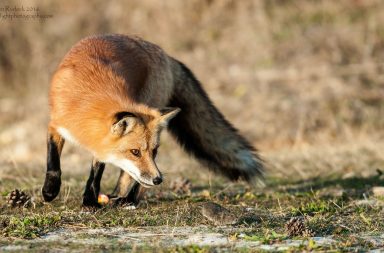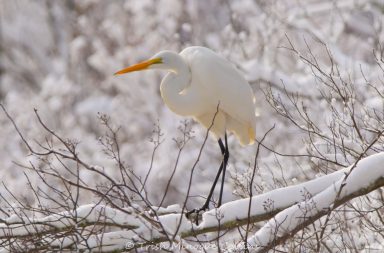By Dianne Taggart
COMMON LOON
The haunting call of the loon is known to many who have been to the northern lakes. Many New England gift shops have “loon related” coffee mugs, aprons, calendars, etc. showing a parent loon with a chick perched on its back while it swims across a bucolic lake with pine trees on the shore – a classic scene.
The Common Loon is a beautiful, large, black and white bird with a glossy black head and red-brown eyes. They have a thick straight black bill, black & white striped neck collar, a white breast, and a checkered black & white back. In winter plumage it has a totally different appearance: gray/gray-brown upper parts, mottled gray head & sides of the neck, with white chin, neck and under parts. This winter plumage is how we usually see the Loon on LI.
Since the loon’s strong, webbed feet and legs are set so far back on the body they have great difficulty walking on land and are quite clumsy-looking when out of the water. However, they are powerful divers and swimmers when in the water. Loons also need a long stretch of water (about 90 feet) to “run” across in order to become airborne. Due to this need for a “run way”, and the fact they cannot walk on land, loons can be stranded on land if they mistake an iced-over parking lot for a lake.
Loons are totally adapted to a life on the water. They have excellent underwater vision and can be seen swimming along the water surface with only their heads beneath the water looking for prey. (This is called “peering”.) When they spot their prey they will dive as deep as 100 or more feet and can stay underwater from 1-3 minutes due to their dense bone structure. They can also compress the air in their feathers so that they sink slowly below the water surface.
The loons diet consists of fish and small crustaceans and they can consumer as much as 2,000 pounds during the breeding season. To assist in digestion they ingest small pebbles into their gizzard in order to grind up fish scales and bones. Unfortunately, several years ago this behavior caused a problem for the birds in northern lakes where hunters were using lead shot. The birds would ingest the pellets, along with the pebbles needed for digestion, causing many birds to die of lead poisoning.
Loons are also susceptible to human intrusion and will abandon their nests if disturbed. Another problem they face is acid rain which also impacts northern loon populations by killing off the fish in the lakes where they nest.
Loon courtship displays are quiet with bill dipping, pair-preening and dives. Territorial displays are more animated, with the bird rising upright in the water, voicing the yodel call, sometimes spreading it’s wings to show its white belly. This behavior is called “penguin dancing” which is a sign of extreme distress.
Common Loons reach sexual maturity at 2 to 3 years. They apparently mate for life, although allegiance is more to the nesting site than to the partner, with both birds returning to the same spot each year. Nest sites are found on secluded lakes and are built of stems, grasses and twigs, with the nest floating in a bog or on the ground only a few feet from the water. Loons lay 1 to 3 olive-green to dark brown eggs that incubate for 26-31 days; usually only one chick survives due to aggressive sibling behavior. The young are precocial and leave the nest soon after hatching with both parents caring for them. Loons are estimated to live 15-30 years, and those that survive their first 2-3 years have a good chance of reaching this longevity.
The loon’s call is a haunting, eerie sound made up of wails and yodels, heard over great distances. The common saying “crazy as a loon” or “loony” may have derived from the loon’s eerie, tremulous call. Although they don’t usually call unless they are on their breeding grounds there have been occasions where, if you are lucky, they can be heard on Long Island as well.
Loons like quiet freshwater lakes in Canada and the far northern parts of the United States. They winter south to Mexico and on east-coast bays and estuaries. Loons can be seen in our area in the ocean off the south shore, on the Peconic Bay, and on the waters off Orient Point and Long Island sound.
So take a trip to the shores of eastern Long Island and you should be rewarded with a view of the Common Loon cruising our waters.
Good birding to all!
The images below were all submitted by members of the Long Island Wildlife Photography Group. Check out the video on page 4 with audio of the Loon’s haunting call.

Anita Regler

Brian Carr

Ed Walsh

Luke Ormond
More images on pages 2, 3, and 4



